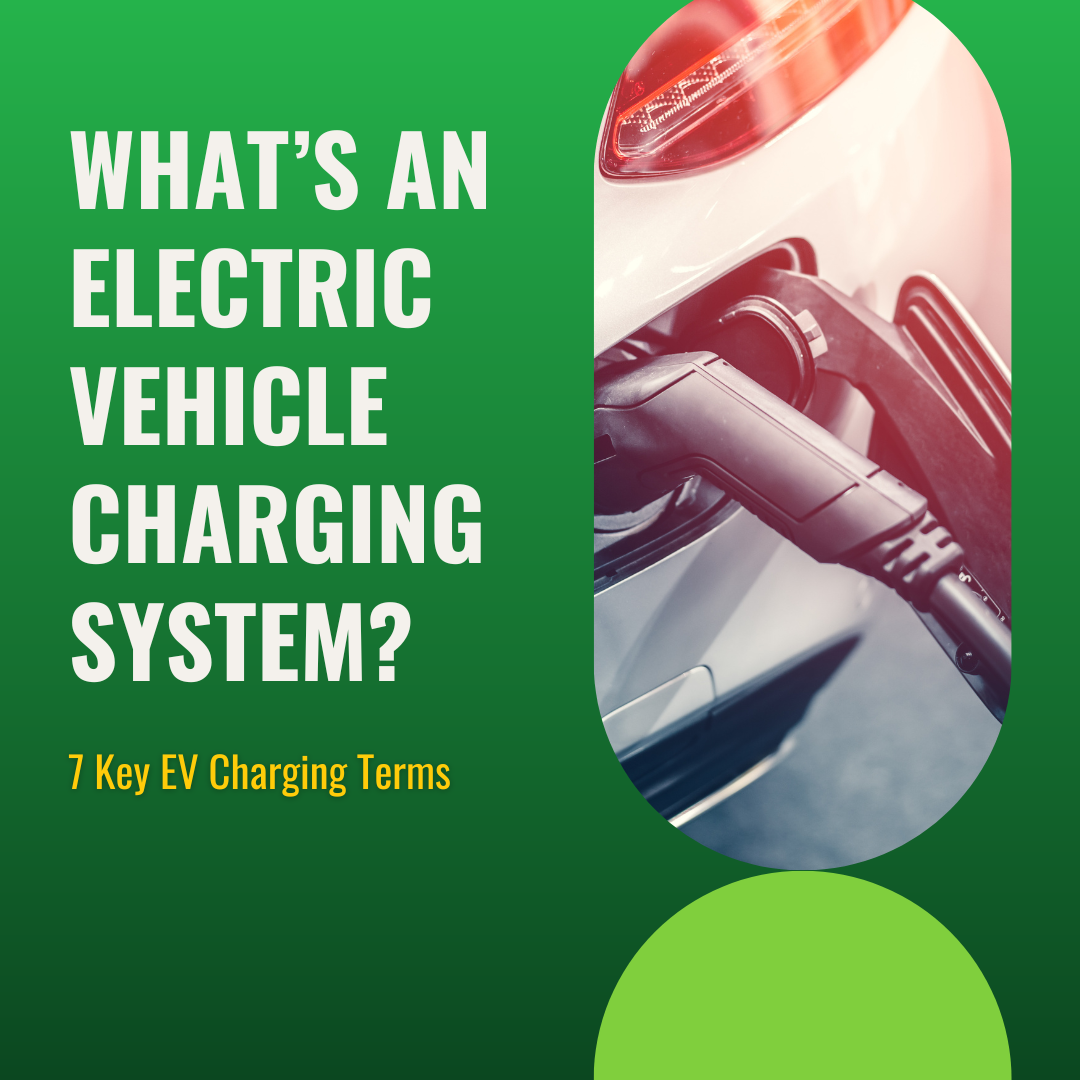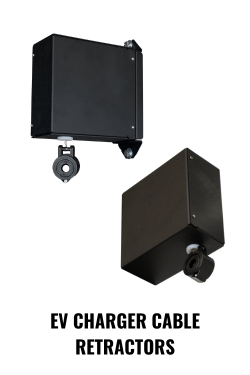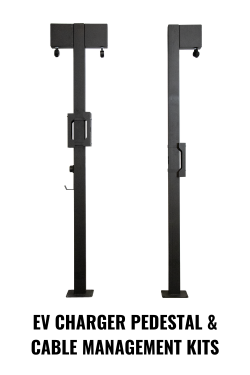We use cookies to make your experience better. To comply with the new e-Privacy directive, we need to ask for your consent to set the cookies. Learn more.
What’s an Electric Vehicle Charging System? 7 Key EV Charging Terms
The National Electrical Code, or NFPA 70, has a whole chapter dedicated to the safe installation of electric vehicle charging stations. As more organizations start to electrify their fleets, these standards — NEC Article 625 — are becoming much more widespread.

The only trouble is that, like all standards and regulations, the NEC seems to use its own language. It doesn’t discuss EV chargers; it talks about electric vehicle supply equipment. It doesn’t refer to charger cables; it mentions output cables to electric vehicles. When we first encounter these terms, it can be hard to match them with what we know about EV charging stations.
That’s why we put together this list. Here, we’ll outline some of the key terms you’ll see both in and outside of NEC Article 625, so you can grasp the standards more quickly — and start building your EV charging stations that much sooner.
7 Key Terms About Electric Vehicle Charging Systems
Here are a few EV-charging terms you need to know, including a few that don’t show up in NEC Article 625.
1. Electric Vehicle Charging System
It may surprise you to know that the NEC doesn’t use this language when discussing EV chargers. However, you will find it mentioned by related authorities, such as the American National Standards Institute (ANSI) and the Institute of Electrical and Electronics Engineers (IEEE).
According to usage by these authorities, an electric vehicle charging system is a unified set of technology designed to transfer power from an external source into an EV’s battery. It includes what we typically call EV chargers, as well as the cables, connectors, and infrastructure required to charge an EV battery.
2. Electric Vehicle Supply Equipment (EVSE)
This is the NEC’s preferred terminology. In NEC Article 625’s usage, EVSE includes all the equipment needed for plug-in charging of EV batteries. That may include everything from connectors, safety devices, chargers themselves, or even power outlets installed for the express purpose of charging EV batteries.
3. Electric Vehicle (EV)
In the NEC, electric forklifts, golf carts, and other offroad vehicles don’t count as EVs. Instead, the term “electric vehicle” refers to cars, trucks, buses, vans, and similar on-road vehicles that are powered by a battery supplying energy to an electric motor. This includes plug-in hybrid EVs, which have both electric motors and gas-powered engines. 
4. EV Connectors
Both in and out of the NEC Article 625, EV connectors are the devices that connect to EV intake ports. The connector couples with the EV’s on-board charger to transmit power from the EVSE to the EV battery. The connector may also transmit data to and from the vehicle and charging equipment.
5. Electric Vehicle Power Export Equipment (EVPE)
Some EVs don’t just draw power into their batteries; they can output power like a rolling generator, too.
Electric vehicle power export equipment (EVPE) is the technology that controls this movement of energy from the EV to an external source. It includes the EV power outlet, as well as the cabling and other infrastructure that moves energy.
Note that NEC Article 625 only uses this term when the EV supplies at least 30 volts AC or 60 volts DC to external equipment.
6. EV Charger Stand
The NEC doesn’t use this term directly, but it’s important to understand for anyone planning to install EV charging stations.
An EV charger stand is a freestanding support designed to elevate and protect EV charging equipment. While the NEC doesn’t mention stands, it does state that EV chargers should be positioned at least 18 inches (450 millimeters) above ground-level indoors, and 24 inches (600 millimeters) high outside. EV charger stands are the means by which you comply with this standard.
7. EV Charger Cable Management System
An EV charger cable management system is a device that keeps EV charger cables elevated off the floor. It can be a simple hook, although you get more benefit from an automated solution like a cable retractor. 
The term “cable management system” appears in the NEC Article 625, which mandates use of such a system for any charging cable longer than 25 feet (7.5 meters).
Choosing EV Charger Support Equipment
As these definitions suggest, finding the right EV charging system is just the first step toward your own charging station. You also need stands to store EV chargers, and cable management systems to protect fragile components.
At Solus Group, we offer combined EV Charger Pedestals and Cable Management Kits, which bundle both of these crucial solutions into a single, integrated package. EV Charger Pedestals support one or two EV chargers, well above the NEC-mandated heights. Integrated Cable Management Kits include retractors that lift cables up and away between uses, while making them easy to access for every charge.
Need help choosing the right infrastructure for your electric vehicle charging system? Contact the experts at Solus Group at 314-696-0200 today.
